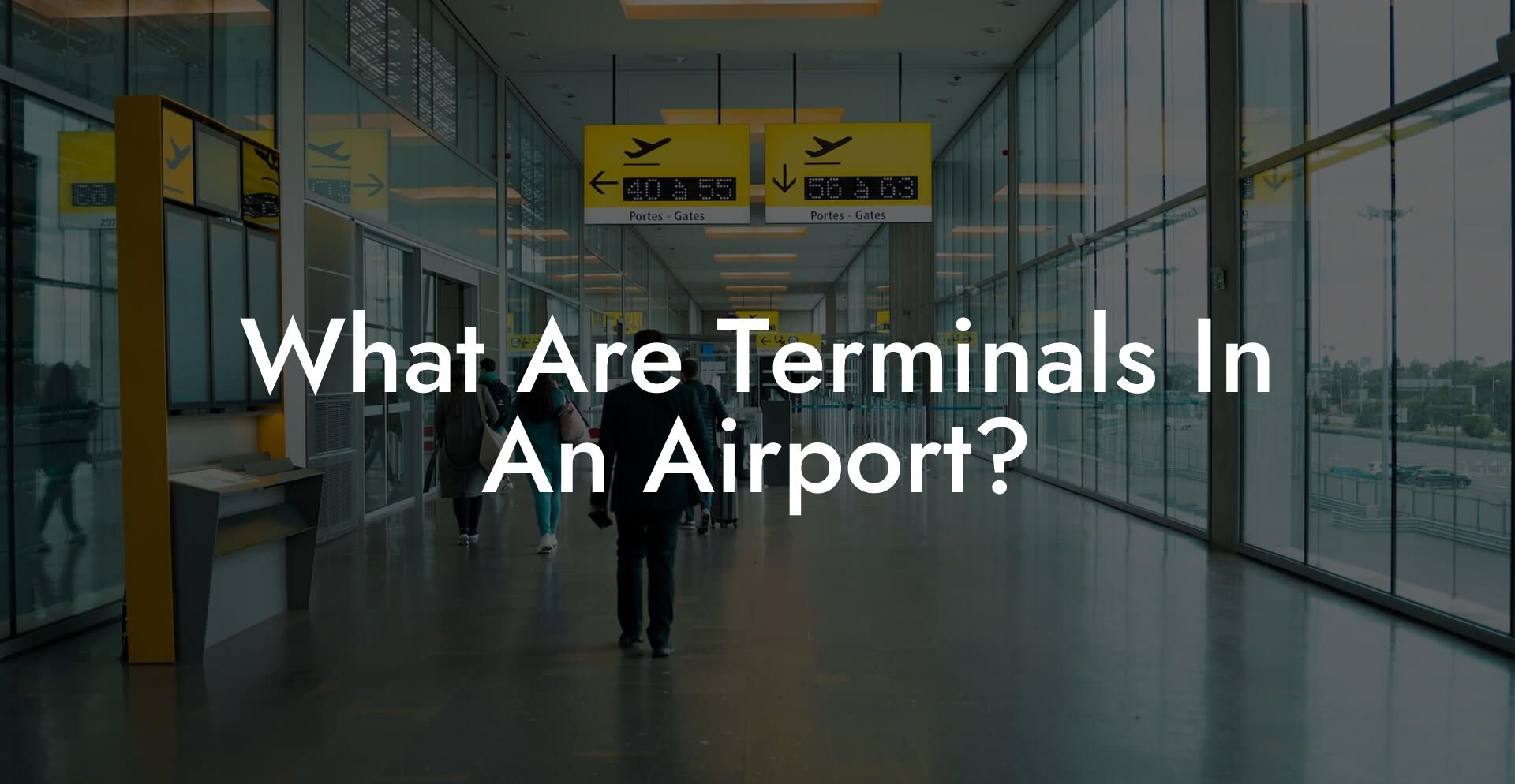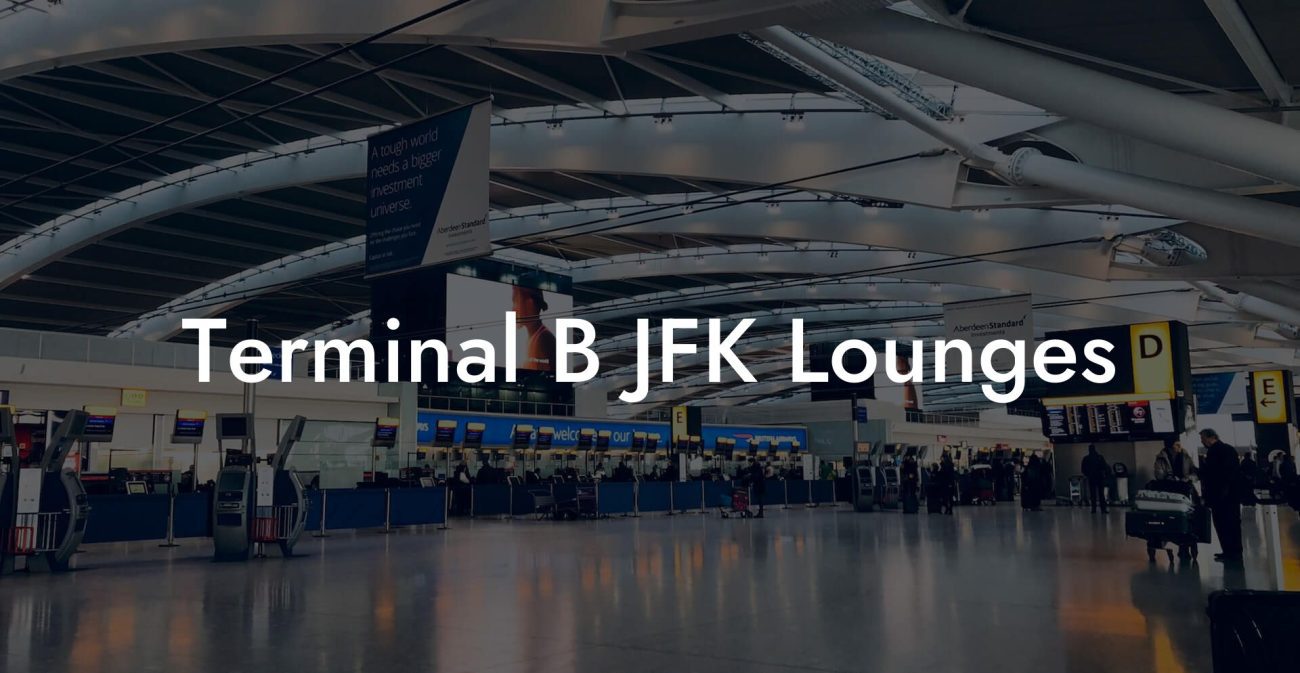Traveling has become more accessible than ever, and that means more people are taking to the skies for vacations, business trips, and more. Airports have become bustling transit hubs, attracting millions of passengers each year. And one aspect of airports that’s crucial to understand is the concept of terminals. Airports can be quite confusing, but understanding what terminals are and how they work will make your airport experience that much smoother. In this comprehensive guide, we’ll cover what terminals are, their purpose, and much more. Ready for takeoff? Let’s dive in!
What Are Terminals In An Airport Table of Contents
What is a Terminal?
Terminals are designated areas within an airport where passengers can board and disembark from flights. Think of them as the main hub of the airport where all the action takes place. Terminals typically house security checkpoints, check-in counters, baggage claim areas, and gates where passengers wait to board their flights. Some airports may have a single terminal, while larger airports can have multiple terminals for handling domestic and international flights.
Purpose of Terminals
The primary purpose of terminals is to facilitate the smooth movement of passengers and their baggage throughout an airport. Some key functions of a terminal include:
1. Check-in
This is where passengers can check-in for their flights, obtain boarding passes, and drop off any checked luggage. Some terminals may offer self-service kiosks for faster check-in procedures.
2. Security screening
Before entering the gate area, all passengers must pass through the security checkpoint to ensure their safety and that of their fellow passengers. This typically involves an x-ray screening of carry-on luggage and a body scan or metal detector.
3. Boarding gates
These are the designated areas within the terminal where passengers wait before boarding their flights. Gates can be equipped with seating, charging stations, and even entertainment options like Airport Sleeping Pods for those long layovers! Each gate is assigned a specific flight, and it’s essential to arrive at the correct one.
4. Retail and dining options
To make passengers’ waiting time more enjoyable, terminals often provide numerous dining, shopping, and other amenities. You’ll find food courts, restaurants, bars, shops, and even spas within many airport terminals.
5. Baggage claim
Upon arrival at your destination airport, passengers head to the baggage claim area to retrieve checked luggage. This is typically situated near the arrivals hall in the terminal.
What Are Terminals In An Airport Example
To better understand terminals, let’s consider the iconic Heathrow Airport in London. This international hub boasts a total of four passenger terminals (Terminals 2, 3, 4, and 5), each catering to specific airlines and routes. Once you arrive at Heathrow, you’ll need to make your way to the appropriate terminal for your flight’s check-in and boarding procedures. For instance, Terminal 5 exclusively serves British Airways and Iberia passengers, while Terminal 3 is home to Virgin Atlantic, American Airlines, and numerous others. Each terminal boasts unique amenities and facilities, making it essential to allow adequate time to navigate between them if necessary.
Frequently Asked Questions
What is an airport terminal?
An airport terminal is a building at an airport where passengers transfer from ground transportation to the facilities that allow them to board and disembark from an aircraft. Terminals usually provide passenger services such as ticketing, baggage check-in, and baggage claim.
How many terminals does an airport have?
The number of terminals at an airport can vary greatly, depending on the airport’s size, capacity, and traffic. Some small airports may have just one terminal, while large international airports can have multiple terminals, each designated for different airlines, destinations, or types of flights.
What’s the difference between a terminal and a concourse?
A terminal is the main building where passengers check-in and go through security, while a concourse is an extension of the terminal where boarding gates are located. Some airports refer to concourses as piers, satellites, or simply as gate areas.
Are airport terminals open 24/7?
This varies by airport. Some terminals at major airports operate 24/7, especially those catering to international flights. However, smaller airports or certain terminals within larger airports may have specific operating hours.
Can you move freely between terminals?
At some airports, passengers can move freely between terminals before security checkpoints. After you pass through security, however, transferring between terminals might require you to go through security again, or there may be a secure shuttle or transit system in place.
What services are typically available in an airport terminal?
Airport terminals often provide a variety of services including restaurants, retail shops, lounges, restrooms, information desks, currency exchange, car rental counters, and sometimes even spa services or conference rooms.
How do I know which terminal my flight leaves from or arrives at?
Your flight ticket or confirmation information typically indicates the departure and arrival terminals. This information can also be found on the airport’s official website or by contacting your airline directly.
Are there hotels within airport terminals?
Some airports offer hotel rooms within a terminal building or in close proximity making it convenient for passengers who have early flights or long layovers.
Can someone without a ticket enter an airport terminal?
Usually, only ticketed passengers are allowed past security checkpoints in the terminal. However, the public areas of the terminal such as the arrival areas, ticketing, and check-in desks are generally accessible to everyone.
Is Wi-Fi available in airport terminals?
Many airport terminals provide free Wi-Fi access to passengers. Some may offer limited free access with the option to purchase more time or faster service.
What kind of accessibility services are available at airport terminals?
Airports typically offer services for passengers with disabilities, including wheelchair assistance, designated seating areas, TTY telephones for the hearing impaired, and assistance from staff to navigate the terminal.
How are terminals designed to handle international flights?
Terminals handling international flights have customs and immigration facilities to process passengers. These terminals are usually separated or have designated areas for international arrivals to ensure a smooth entry process.
What is a terminal hub?
A terminal hub is an airport terminal dedicated to a specific airline or alliance of airlines, serving as the main center for their flight operations. It typically handles a large volume of flights and connects passengers to a range of domestic and international destinations.
Should I arrive earlier for a flight at a larger terminal?
For larger terminals that handle more passengers and flights, it is generally recommended to arrive earlier to account for potentially longer check-in and security lines. The general rule of thumb is to arrive 2-3 hours before a domestic flight and 3-4 hours before an international flight.
Can you sleep in airport terminals?
Sleeping in airport terminals is technically allowed at most airports, but policies can vary. Some airports have designated rest areas or reclining chairs suitable for sleeping, while others may be less comfortable for overnight stays.
How can I find my way around a large airport terminal?
Airport terminals commonly offer maps, digital kiosks, signage, and even smartphone apps that you can use to navigate. Airport staff are usually on hand to provide guidance as well.
Are pets allowed in airport terminals?
Pets are generally allowed in the public areas of airport terminals but must be in a carrier or on a leash. Service animals are allowed throughout the terminal. Always check the specific airport’s policies before traveling with pets.
How early should I be at the terminal before a flight?
Typically, airlines suggest arriving at the terminal 2 hours before a domestic flight and 3 hours before an international flight. However, this can vary by airport and during peak travel seasons, so checking with your specific airline is always best.
What happens if I’m transferring between flights at different terminals?
If your connection requires you to transfer between different terminals, airports usually provide shuttle services, walkways, or intra-terminal trains. Make sure to account for additional time to transfer between terminals, especially if you need to go through security again.
Are smoking areas available in airport terminals?
Many airports now have designated smoking areas outside terminals or in specifically ventilated rooms, as smoking is generally prohibited inside terminal buildings. The availability and locations of smoking areas can vary, so it is advised to check the airport’s website or inquire with airport staff.
What is a satellite terminal?
A satellite terminal is a smaller terminal structure that is separate from the main terminal building, sometimes connected by underground or above-ground transportation systems. They are typically used to manage additional passenger traffic or certain types of flights like international or regional services.
Now that you have a comprehensive understanding of what terminals are and their essential functions, your next trip should be smooth sailing, or rather, flying! Remember to always double-check your flight details to ensure you’re at the proper terminal and gate, and be sure to take advantage of helpful airport tools like maps and digital signage. And don’t forget to check out our other informative guides on Airport Sleeping Pods to make your layovers more enjoyable! If you found this guide helpful, please take a moment to share it with fellow travelers, and explore the rest of our Airport Sleeping Pods blog for more valuable information.













